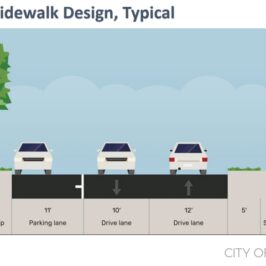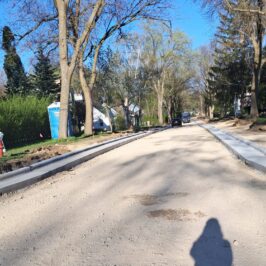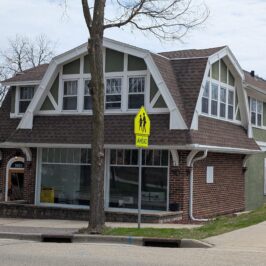This information is from https://www.madisonzoningproposal.com/
What is being proposed?
The “Revising the Family Definition” proposal allows up to five unrelated adults and their dependents in a housing unit. The original intent of the family definition was to protect neighborhoods from college student renter households.
Why is it being proposed?
The change is proposed to combat Madison’s housing crisis.
| City’s Argument | Reality for Near-Campus Neighborhoods |
|---|---|
| Increases housing choice for low-income residents | Increasing occupancy limits in rentals near campus increases the rent prices in these near campus neighborhoods, due to the student pressure for rental houses (1). Because students drive up rent prices, they make properties more unaffordable. This puts housing even further out of reach for low-income and non-student residents. |
| Student housing market has changed due to new student rental availability | Despite many new apartment buildings north of Regent St. and on State St, students continue to occupy near-campus neighborhoods to the full extent possible. If students were migrating north, as has been argued, there would be a gradual transition from student housing to non-student housing. In reality, there is a clear dividing line between students and non-students, marked by the zoning border. There is a huge demographic of students who seek to live in houses in the near-campus neighborhoods, and oppose living in the new amenity-rich high-rise apartments due to their premium costs and occupancy limitations. |
| Free way to increase city’s housing supply | If this proposal is enacted, it will displace permanent residents in the near-campus neighborhoods (renters and homeowners alike) in favor of students. There is no evidence to support the idea that this will increase the density of the neighborhoods. |
What is a Better Solution?
While the “Revising the Family Definition” proposal has merit for many neighborhoods in the greater City of Madison, it would be detrimental to current residents in the near-campus areas of the Greenbush, Vilas, Regent, and Dudgeon-Monroe neighborhoods. We propose establishing an overlay zone in the neighborhoods immediately surrounding the UW-Madison campus, which are most vulnerable to speculative housing economics.
What is an overlay zone?
Overlay zoning is a regulatory tool that creates a special zoning district, placed over an existing base zone(s), which identifies special provisions in addition to those in the underlying base zone. An overlay zone could maintain the current occupancy limits in these neighborhoods.
MAKE YOUR VOICE HEARD
We Need Everyone
Contact the Zoning Administration
Zoning Administrator Kate Bannon (City of Madison)
(608) 266-4569
Planning Commission (City of Madison)
Contact your Alder
Alder Tag Evers (Greenbush/Vilas/Dudgeon-Monroe)
(608) 424-2580
Alder Regina Vidaver (Regent Neighborhood)
(608) 616-0669
Tell them you oppose the proposal as it currently stands and that you are asking them to create an overlay zone. Tell them you would like to create an overlay zone to keep vulnerable neighborhoods accessible for both rentals and owner-occupied housing.
How will this Impact Housing Costs
for Permanent Residents
in Near-Campus Neighborhoods?
Student rentals drive up rent and housing costs for all residents
A 2014 analysis by Tom Laidley of NYU of 20 college towns found that an increase in the size of a college’s off-campus population is associated with higher market rents, particularly in areas that have a relatively high concentration of undergraduate students. Similarly, a 2009 Rutgers University analysis of New Jersey institutions found that the presence of a college is associated with a 10 percent increase in home prices. A 2017 regional housing study for the Bloomington-Normal Illinois region found that student housing rental rates in university towns drive up housing costs for family renters. Student housing may also attract predatory landlords who rent poorly maintained housing using questionable leasing practices to indiscriminate students. 1
FAQ
In areas of Madison that do not have the pressures of students, YES! This will make housing more affordable because rent can be split between multiple adults, lowing the cost per person. However, in the areas adjacent to campus, the answer is NO! Studies have been done that show that properties near high undergraduate populations have higher rents than properties that are farther away (1). Instead of making housing more affordable in these near-campus neighborhoods, it makes it LESS affordable. Non-students will now have to compete for housing with UW students. Groups of students renting together will price out non-student residents. This will ultimately make our community less equitable and less affordable. This was not the original intent of this proposal, and is a critical consequence that must be addressed through modifications to the proposed plan.
Are we against students?
No! We welcome everyone into our neighborhoods, students and non-students alike. We believe a community is best with a diverse group of residents living together. Students are currently allowed to live anywhere in near-campus neighborhoods in the same way everyone else is. Due to the high demand for student housing in near-campus neighborhoods, if this proposal is enacted, large groups of students will take over houses currently occupied by non-student residents. This will displace current non-student residents, along with pricing out non-student renters and first-time home buyers. We support changing the family definition to include 5 unrelated persons with addition of a buffer zone around campus, because without a buffer zone, it would increase housing costs for all residents (pricing out some current long term residents) and decrease equity. Including a buffer zone will keep near-campus neighborhoods open for unrelated students in the same household, the same way it is now.
Allowing 5 unrelated adults in one house should make housing more affordable, right?
Are we against renters?
No! We welcome everyone into our neighborhoods, renters and homeowners alike. We believe a community is best with a diverse group of people living together. If this proposal is enacted it would be more expensive for non-student renters to live in near campus neighborhoods. We support changing the family definition to include 5 unrelated persons with the addition of a buffer zone around campus, because without a buffer zone, it would increase housing costs for all residents (pricing out some current long term renters) and decrease equity.
Allowing up to 5 unrelated adults in one house will increase density, right?
Not necessarily. There has been no evidence provided showing this will increase density. It is also possible this will decrease density. Currently, many homes are occupied by families. Some families put two family members per room, fully utilizing the available space. Other families have vacant rooms. Some student renters have two students per room, some student renters only have one person per room. Without data showing current room occupancy rates for near-campus neighborhoods compared to room occupancy rates for student renters it is impossible to know whether this will increase or decrease density.
Examples of Solutions in Other College Towns
Temple University, Philadelphia
Prohibition of Student Rental Housing in Specified Areas
Philadelphia took the extraordinary step of prohibiting all student housing—including apartment houses, fraternity and sorority houses, and multiple-family dwellings—within a district surrounding Temple University in 2005 and expanded that area in 2011. The dramatic move was in response to neighbor concerns about rental costs increasing and the loss of affordable single-family homes to student housing. Temple University transitioned from a commuter school to a university with on-campus students in 2005 without building new on-campus housing until 2013. As a result, investors rehabilitated single-family houses in the area to address the need.
The Commonwealth Court of Pennsylvania upheld the restriction as constitutional in 2011. This regulation lead to the increase of student housing in areas outside of the district, including in high-rise, multi-family apartment buildings to accommodate Temple’s growing student population that increased from 26,000 full-time students in 2005 to 34,500 in 2018. 1
Minnesota
Caps on Rental Licenses
A growing number of cities are adopting rental registration and licensing laws that require landlords to obtain an annual license to rent properties or to register their rental properties. Some jurisdictions in Minnesota have limited the total number of rental licenses available in certain neighborhoods to encourage homeownership and restrict the number of student housing and investor-owned rentals. For instance in Minnesota, five cities have enacted some type of rental density ordinance, including Mankato, Northfield, Saint Paul, West Saint Paul, and Winona. Each city allows a different percentage of rental licenses (10 percent in Mankato to up to 30 percent in Winona) and varies in enforcement and penalties for violations.
In 2014, the Minnesota Court of Appeals allowed the 2005 Winona law to stand. In Minnesota, North Mankato enacted a rental density ordinance in 2010 that limits rental properties on a block to 10 percent in order to maintain high homeownership rates. The ordinance survived a legal challenge because the municipality had commissioned a detailed housing study that established the need for a cap on rental licenses. The housing study showed that conversions of single-family houses to rentals had increased by an average of 4.3 percent per year, and if left unregulated would lead to 70 new licenses in a five-year period. The housing study found that rental concentrations are linked to increases in nuisances, city code violations, and calls to the local police department (renter-occupied homes represent 16 percent of properties and are responsible for 31 percent of all police calls). These caps on rental housing presume there is sufficient market interest by homeowners to purchase and maintain these homes. Ames Iowa also enforced rental license caps in 2018 for neighborhoods around Iowa State University. 1
Penn State
Minimum Distance Requirement
In Pennsylvania, many municipalities have imposed a minimum distance requirement between student rentals. These requirements grandfather in all existing student housing and then accommodates new student rental housing within a dispersed pattern. The goal is to ensure regulated rentals cannot achieve a “tipping point” on any one block, and to limit market pressures from investors for available single-family homes.
There is no available evidence to show the impact of these requirements, but several Pennsylvania towns and cities have adopted this approach. Since 2012, student homes in Reading, Pennsylvania, cannot be located within 500 feet of each other except by variance. In State College, Pennsylvania, an ordinance was passed in 2013 setting separation requirements for student housing so that in R-1 districts, new student homes are not permitted within 720 feet of an existing student home, and in R-2 districts they are not permitted within 675 feet. 1
University of Wisconsin – LaCrosse
La Crosse’s Washburn neighborhood is close to downtown and holds the entire Viterbo University campus within its boundaries. With over 86% of Washburn’s housing renter-occupied, nearly half of all homes built almost a century ago, and a median family income that falls 50% below the city median, the Washburn neighborhood has been on the city’s revitalization radar since at least 2002. Driven to action by the state of the Washburn neighborhood and others like it, the La Crosse city council enacted a six-month moratorium in July of 2013 preventing further conversion of single-family homes to rental properties while the city investigated the matter further. The moratorium was not without controversy, as one UW-La Crosse student representative on the city council admitted to being “kind of offended” by the comments of homeowners and with local landlords decrying the act as “a form of redlining that will have the impact of keeping minorities out of some neighborhoods.”With the support of the mayor, La Crosse commissioned a Single Family Conversion Ad Hoc Committee shortly thereafter, tasked with “determining the impacts that rental conversions have on public health, safety, welfare, quality of life, aesthetics, and tax base of its neighborhoods.”Issuing its findings in December 2013, the committee concluded that “[t]he conversion of housing to student occupancy…has substantially affected the character of the neighborhoods in and around the moratorium area and has had a negative impact on quality of life for many residents.”Further recommendations for action included encouraging single-family homeownership by providing home construction or renovation grants through the city’s existing ReInvest La Crosse program, utilizing regulatory approaches such as redefining the maximum allowable unrelated occupants per unit by altering the city’s definition of ‘family’ and by imposing tougher parking restrictions on homes with several vehicles routinely parked on the street nearby, and streamlining and enforcing existing ordinances to mandate rental property inspections for all applicable housing units every two years as well as expand the scope and depth of inspection criteria . Other planning approaches in La Crosse include converting aging municipal buildings into student rental housing as a way to ease the pressure on traditional family residential neighborhoods. 2
Boston, Massachusetts
Despite having a comparatively inclusive definition of family that allows groups of up to four unrelated student renters to qualify as a family unit, nearly 14,000 students are living in conditions that exceed those limits, often in single-family residences in predominately residential neighborhoods.
Revised last in March of 2008, Boston’s family definition reads as follows:
“Family”, one person or two or more persons related by blood, marriage, adoption, or other analogous family union occupying a dwelling unit and living as a single non-profit housekeeping unit, provided that a group of five or more persons who are enrolled as full-time, undergraduate students at a post- secondary educational institution shall not be deemed to constitute a family. A group residence, limited, as defined in clause (22B) of this Section 2-1 shall be deemed a family.
Boston’s definition is noteworthy for its limitation pertaining specifically to controlling density for residences occupied specifically by full-time undergraduate students of colleges and universities. City officials have promised to pursue measures to enforce compliance with density limits, including altering its family definition. But so far the emphasis has been on increasing inspections, with nearly $18 million devoted to enforcing the city’s new rental re-inspection program that requires landlords to register rental properties with the city and submit to safety inspections every five years. 2
St. Paul, Minnesota
The City of Saint Paul, Minnesota, is home to a number of colleges and universities where student renters encroach into single-family residential neighborhoods. Of particular concern are falling home ownership rates in the Highland Park, Macalester Groveland, and Merriam Park neighborhoods which absorb nearly 1,800 student renters every year from nearby Saint Thomas University. Saint Paul’s definition of family allows for up to four unrelated individuals to occupy a residence and makes no special provision for student renters
In October of 2011, the city council passed an ordinance placing a temporary moratorium ordinance on the conversion of one-family homes student housing while the City’s Planning Commission studied the issue. The Planning Commission released the findings of its student housing zoning study in May of 2012. Concerned with identifying the tipping point beyond which too many student renters in one area leads to a spiral of perpetual decline and homeowner flight, the Planning Commission believed that Saint Paul’s unique local circumstances made even an 85% owner/15% renter split a potentially risky one for neighborhood integrity. (Other studies, like a strategic vision plan for the University of Wisconsin – Milwaukee neighborhood released by the city of Milwaukee Department of City Development (DCD) in June of 2003, recommended roughly a 67% owner/33% renter ratio.) The Saint Paul Planning Commission recommended that the City adopt a Student Housing Neighborhood Impact Overlay District requiring a 150-foot minimum distance between student dwellings. Other policy recommendations included: mandating that universities with on-campus housing facilities house all first and second year students on-campus; investigating opportunities for increasing renter density within small areas in the overlay district; creating an historic conservation district to protect and preserve residential character and appeal. Based on the recommendations of the Planning Commission the City Council adopted the following ordinance (Ord 12-34, § 1, 6-27-2012) establishing the overlay district. 2
Implementation Timeline
September
Proposal introduced to plan committee
December 19th
Q & A session with Greenbush, Vilas, Regent, Dudgeon Monroe neighborhoods and city representatives
February 13th
Plan Commission votes on recommendation to City Council
February 28th
City Council votes on whether proposal is accepted
Details on Zoning Changes Proposed
Current Maximum Residents Allowed by Zone (simplified)
Current Maximum Number of Residents Allowed by Zoning (Simplified)
| SR-C1, SR-C2, SR-C3, TR-C1, TR-C2, TR-C3, TR-C4, TR-R- AND TR-P Zoning Districts | Other Zoning Districts where Housing is Allowed | |
|---|---|---|
| Renter-Occupied, Unrelated | 2 | 5 |
| Owner-Occupied, Unrelated | 5 | 5 |
| Related | No limit on related + 1 unrelated roommate | No limit on related + 4 unrelated roommates |
Proposed Maximum Residents Allowed by Zone (simplified)
Proposed Maximum Number of Residents Allowed by Zoning (Simplified)
̶S̶R̶-̶C̶1̶,̶ ̶S̶R̶-̶C̶2̶,̶ ̶S̶R̶-̶C̶3̶,̶ ̶T̶R̶-̶C̶1̶,̶ ̶T̶R̶-̶C̶2̶,̶ ̶T̶R̶-̶C̶3̶,̶ ̶T̶R̶-̶C̶4̶,̶ ̶T̶R̶-̶R̶-̶ ̶A̶N̶D̶ ̶T̶R̶-̶P̶ ̶Z̶o̶n̶i̶n̶g̶ ̶D̶i̶s̶t̶r̶i̶c̶t̶s̶ | ̶O̶t̶h̶e̶r̶ All Zoning Districts where Housing is Allowed | |
|---|---|---|
| ̶R̶e̶n̶t̶e̶r̶-̶O̶c̶c̶u̶p̶i̶e̶d̶,̶, Unrelated | 2̶ | 5 adults and their dependents |
| ̶O̶w̶n̶e̶r̶-̶O̶c̶c̶u̶p̶i̶e̶d̶,̶ ̶U̶n̶r̶e̶l̶a̶t̶e̶d̶ | 5̶ | 5̶ |
| Related | ̶N̶o̶ ̶l̶i̶m̶i̶t̶ ̶o̶n̶ ̶r̶e̶l̶a̶t̶e̶d̶ ̶+̶ ̶1̶ ̶u̶n̶r̶e̶l̶a̶t̶e̶d̶ ̶r̶o̶o̶m̶m̶a̶t̶e̶ | No limit on related + 4 unrelated roommates |
Proposed Maximum Number of Residents Allowed by Zoning (Simplified)
Map of City
District Zoning

Link to city distric zoning map
Who Created this Website?
Neighbors from S Mills in the Greenbush Neighborhood
Contact us at: madisonzoningproposal@gmail.com
References
1. The Role Student Housing Plays in Communities – Karen Black – https://shelterforce.org/2019/09/06/the-role-student-housing-plays-in-communities/
2. How to Define a Family? The Special Case of Regulating Student Rental Housing In Single-Family Residential Neighborhoods In Wisconsin’s College and University Communities
– Matthew J. Sorensen* Brian W. Ohm** – https://dpla.wisc.edu/wp-content/uploads/sites/1021/2017/06/UWEX-Report-Student-Housing-Report-Sorensen-Ohm-final.pdf
Madison Zoning Proposal
madisonzoningproposal.com
©2022







